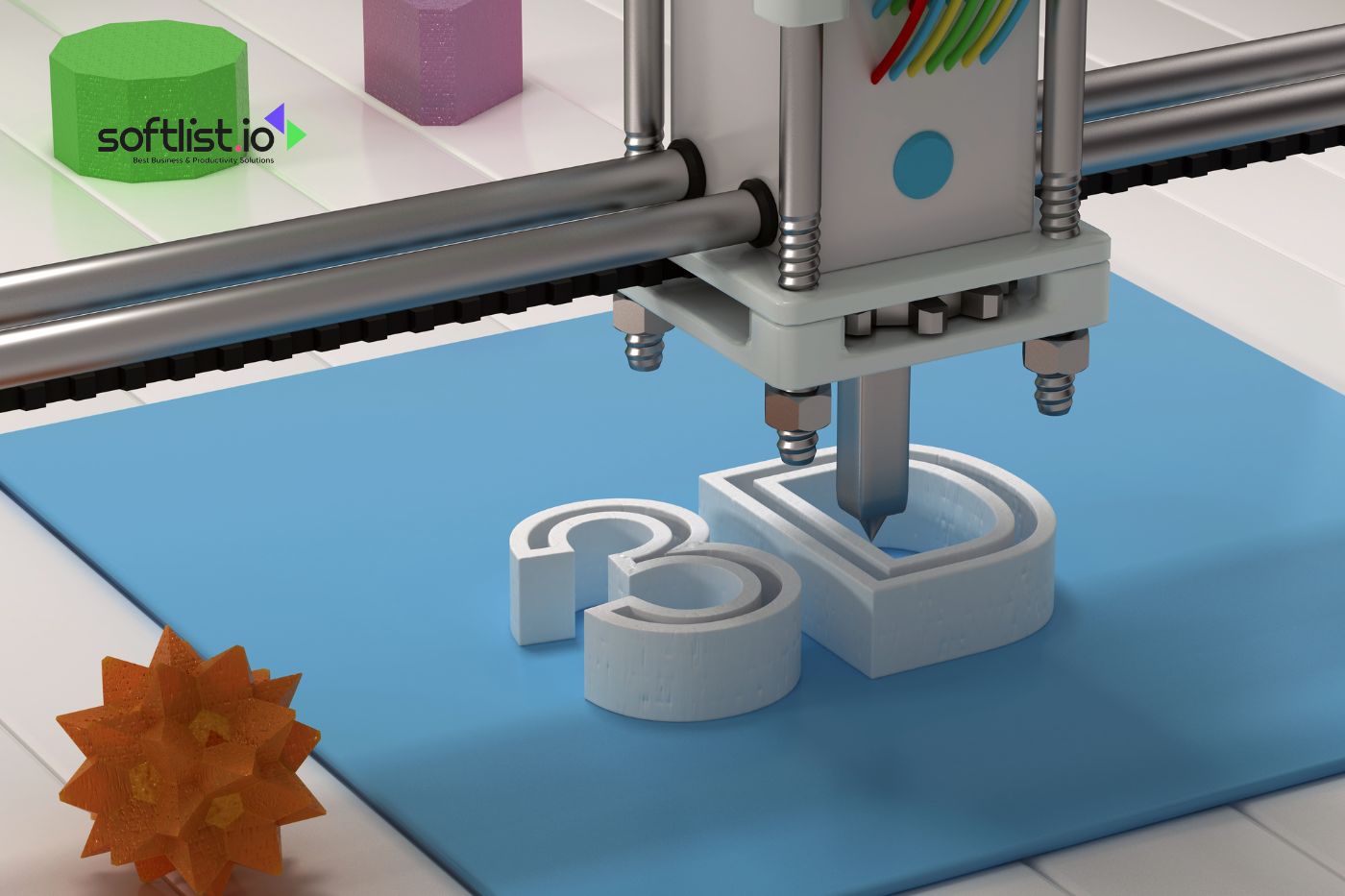3D printing has transformed the way we create objects, from intricate models and prototypes to functional parts and artistic creations. At the heart of this technological revolution is a diverse array of materials, each offering unique properties that cater to different needs and applications.
So, we will discuss the most commonly used 3D printing materials, providing insights into their characteristics, advantages, and typical uses.
Importance of 3D Printing Material Selection
The choice of material in 3D printing doesn’t just affect the printing process; it fundamentally influences the physical characteristics, durability, functionality, and even the aesthetic appeal of the printed object. Materials can vary widely in strength, flexibility, temperature resistance, and biocompatibility, among other factors.
Therefore, selecting the appropriate and right material is essential for ensuring that the final product meets the specific requirements of its intended use. This selection process involves considering the material’s compatibility with the chosen 3D printing technology and its impact on the environment, cost, and availability.
Common Materials Used in 3D Printing

Source: Canva Pro
3D printing, also known as additive manufacturing, uses a wide range of materials, each offering different properties and benefits. Here are some of the most common types of 3D printing materials:
1. Plastics and Polymers
In the realm of 3D printing, plastics and polymers stand as the foundational materials for a wide range of applications, offering versatility, ease of use, and accessibility that make them particularly appealing for both hobbyists and professionals.
Here are the most common types of plastic material and polymers used in 3D printing processes, each with its unique properties and applications.
- Polylactic Acid or PLA
PLA is a favorite among 3D printing enthusiasts because it’s derived from renewable resources like corn starch, making it biodegradable and environmentally friendly. It’s easy to print with, requires lower temperatures, and offers a smooth finish in various vibrant colors.
However, its biodegradability means it’s not ideal for items meant to last a long time or withstand high temperatures. PLA is perfect for decorative items, prototypes, and any application where sustainability is a priority.
- Acrylonitrile Butadiene Styrene or ABS
ABS is a durable plastic used in everything from car parts to LEGO bricks. It’s popular in 3D printing for objects that need to be tough and withstand higher temperatures.
Printing with ABS can be a bit more challenging than PLA due to its need for a heated bed to prevent warping and its tendency to emit a strong odor when melted. It’s the go-to material for functional parts and items that require structural integrity.
- Polyethylene Terephthalate Glycol or PETG
Polyethylene Terephthalate Glycol is a versatile material that combines the ease of printing found in PLA with the durability of ABS. It’s resistant to water and chemicals, making it ideal for printing containers, protective gear, and functional parts that might be exposed to harsh conditions.
PETG is also less prone to shrinkage and warping, making it a good choice for detailed and accurate prints.
- TPU/TPE (Thermoplastic Polyurethane/Thermoplastic Elastomer)
TPU and TPE are flexible materials that are perfect for items that need to bend or stretch, like phone cases, wearable devices, and seals. These materials mimic the properties of rubber, combining flexibility with the durability and ease of printing of thermoplastics.
While they can be printed on standard 3D printers, they often require slower printing speeds to maintain accuracy due to their elasticity.
2. Resins
These are another category of 3D printing materials, primarily used in stereolithography (SLA) and digital light processing (DLP) printing technologies. These methods utilize UV light to cure liquid resin into solid objects, layer by layer.
Moreover, resins are known for producing highly detailed and smooth surfaces, making them ideal for applications requiring fine features and a high-quality finish.
Let’s explore some common types of resins used in 3D printing:
- Transparent resin
This resin type is designed to produce parts with a clear, glass-like finish, allowing light to pass through them with minimal distortion. Transparent resin is perfect for creating models, prototypes, and products where clarity is essential, such as lenses, light guides, and decorative objects.
While inherently transparent, the surface quality and clarity can be further enhanced through post-processing techniques like sanding and clear-coating.
- Paintable resin
Paintable resin is formulated to have a high-quality surface that’s easy to paint and finish after printing. This makes it particularly suitable for applications with critical final appearance, such as figurines, detailed models, and prototypes that require precise color matching.
Paintable resin offers a smooth surface that minimizes the need for extensive post-processing, allowing paints and coatings to adhere better and showcase fine details without the graininess that might be present in other materials.
- High-detail resins
High-detail resins are engineered for applications requiring extremely fine features and high resolution. These resins have properties that allow for printing intricate designs with razor-sharp edges and smooth surfaces, making them ideal for jewelry, dental models, and miniature models with detailed textures.
High-detail resins capture the nuances of a printing design, making them a top choice for professionals and hobbyists who demand the highest level of detail in their printed objects.
3. Metals

Source: Canva Pro
Metal 3D printing has made significant strides, expanding additive manufacturing capabilities into sectors like aerospace, automotive, healthcare, and tooling. This technology allows for the creation of complex, high-strength, and lightweight parts that would be challenging or impossible to produce with traditional manufacturing methods.
Here’s a look at some commonly used metals in 3D printing:
- Titanium
Known for its exceptional strength-to-weight ratio, corrosion resistance, and biocompatibility, titanium is extensively used in aerospace, medical implants, and automotive industries.
In 3D printing, titanium alloys, particularly Ti-6Al-4V, are favored for producing parts that need to be lightweight yet withstand high stress and harsh environments. Its biocompatibility makes it ideal for medical implants and prosthetics, as the human body accepts it.
- Aluminum
Aluminum alloys are prized in 3D printing for their lightweight, strength, and thermal conductivity. They are easier to print than other metals and are used to manufacture parts in the automotive and aerospace industries where weight reduction is crucial without sacrificing strength.
Aluminum’s thermal properties also make it suitable for heat exchangers and other components requiring efficient heat dissipation.
- Inconel
Inconel is a family of nickel-chromium-based superalloys known for their remarkable strength at high temperatures, resistance to corrosion, and oxidative environments. These properties make Inconel ideal for parts exposed to extreme conditions, such as turbine blades, rocket engine components, and exhaust systems in the aerospace and automotive sectors.
Inconel’s ability to retain its strength at high temperatures makes it a favorite for challenging engineering applications.
- Stainless Steel
Stainless steel is widely used in 3D printing for its strength, corrosion resistance, and versatility. It’s a cost-effective option for producing functional parts and prototypes across various industries, including automotive, aerospace, and consumer goods.
Stainless steel can print everything from durable mechanical parts to intricate jewelry designs. It’s also used in the medical field for surgical instruments and implants due to its resistance to corrosion and sterilization processes.
4. Ceramics
Ceramics in 3D printing bring the benefits of high-temperature resistance, hardness, and chemical stability to various applications, from aerospace to healthcare.
The ability to print with ceramics has opened up new possibilities for producing parts with complex geometries that are difficult to achieve using traditional ceramic manufacturing methods.
Here’s an overview of some common ceramic materials used in 3D printing:
- Zirconia (ZrO2)
Zirconia is known for its high strength, toughness, and resistance to wear and chemical corrosion, making it ideal for industrial applications requiring durability and stability in harsh environments.
In the medical field, zirconia’s biocompatibility and aesthetic qualities make it a popular choice for dental crowns and implants. Its high resistance to cracking and thermal expansion also suits components that undergo significant thermal stress.
- Alumina (Al2O3)
Alumina, or aluminum oxide, is one of the most widely used ceramic materials in 3D printing due to its excellent thermal conductivity, electrical insulation properties, and resistance to wear and corrosion. It’s employed in applications ranging from electrical insulators and substrates to abrasive tools and biomedical implants.
Alumina’s high melting point and hardness make it suitable for components that must withstand high temperatures and abrasive conditions.
- Silicon Carbide (SiC)
Silicon Carbide stands out for its exceptional thermal conductivity, hardness, and resistance to thermal shock, making it a preferred material for high-performance applications in aerospace, automotive, and energy sectors.
SiC is used in components like heat exchangers, nozzles, and bearings that must perform under extreme temperature and stress conditions. Its ability to withstand abrasive environments also makes it suitable for mechanical seals and wear parts.
- Glass Ceramics
Glass ceramics are a unique category that combines the properties of both glass and ceramics, offering excellent thermal stability, strength, and translucency.
They can be precisely controlled and tailored to have specific thermal expansion coefficients, making them ideal for applications requiring tight dimensional tolerances and stability across temperature changes. In optics and electronics, glass ceramics are used for reflectors, insulators, and other components requiring precision and durability.
5. Bio-based Materials and Composites
Bio-based materials and composites for 3D printing represent a rapidly evolving area that focuses on sustainability, biocompatibility, and the utilization of renewable resources.
Due to their reduced environmental impact and innovative properties, these materials are gaining popularity in various industries, including healthcare, packaging, and construction.
Let’s explore some of these materials:
- PLA-based Composites
PLA-based composites are derived from polylactic acid (PLA), a biodegradable and bio-based polymer, combined with reinforcements like carbon fibers, glass fibers, or natural fibers to enhance its mechanical properties.
These composites can offer improved strength, stiffness, and thermal stability compared to standard PLA, making them suitable for a wider range of applications.
PLA-based composites are often used in automotive parts, sporting goods, and biodegradable consumer products, where they contribute to reducing the carbon footprint while delivering high performance.
- Cellulose-based Materials
Cellulose-based materials for 3D printing are derived from the most abundant organic polymer on Earth, offering a sustainable alternative to petroleum-based polymers. These materials can be sourced from wood, plants, or recycled paper, and are processed into various forms, including cellulose nanocrystals and cellulose nanofibers, which can be used as reinforcement in biocomposites.
Cellulose-based materials are praised for their biodegradability, low cost, and good mechanical properties, making them ideal for packaging, disposable items, and biomedical applications like drug delivery systems.
- Bio-inks
Bio-inks are specialized materials designed for 3D bioprinting, creating tissue-like structures that mimic natural tissue characteristics. These inks comprise living cells mixed with a biocompatible gel or scaffold material. The composition of bio-inks can be tailored to suit different types of cells and tissues, allowing for the creation of complex, functional biological structures.
Bio-inks are a cornerstone of regenerative medicine, enabling the fabrication of tissue constructs for drug testing, disease modeling, and potentially, organ replacement.
- Natural Fiber Composites
Natural fiber composites combine biodegradable or bio-based polymers with natural fibers such as flax, hemp, jute, or bamboo. These composites offer a sustainable alternative to traditional composite materials, reducing the reliance on synthetic fibers.
Natural fiber composites are characterized by their light weight, good mechanical properties, and lower environmental impact. They are used in applications ranging from automotive interior parts and building materials to consumer goods, where they contribute to reducing the overall carbon footprint and enhancing the environmental friendliness of products.
6. Specialty Materials Used for 3D Printing

Source: Canva Pro
Specialty materials in 3D printing push the boundaries of additive manufacturing by offering functionalities beyond conventional materials. These advanced materials open up new applications and possibilities in various fields, including electronics, robotics, and smart textiles.
Let’s delve into some of these fascinating specialty materials:
- Conductive Filaments
Conductive filaments are designed to create 3D-printed objects with electrical conductivity, enabling the production of custom circuits, sensors, and electronic components directly within printed structures. These filaments typically incorporate conductive materials, such as carbon black, graphite, or metallic powders, into a plastic base material, allowing them to conduct electricity.
The resulting prints can be used to prototype electronic devices, create wearable electronics, or integrate touch sensors into objects, bridging the gap between 3D printing and electronic functionality.
- Magnetic Materials
Magnetic materials for 3D printing are infused with magnetic particles, enabling the production of objects that exhibit magnetic properties.
These materials can be magnetized post-printing, making them useful for creating custom magnets, magnetic sensors, and actuators. Applications include educational models, magnetic coupling mechanisms, and interactive toys.
Printing with magnetic materials also allows for the creation of complex geometries that would be difficult or impossible to achieve with traditional magnetic materials.
- Shape Memory Polymers
Shape memory polymers (SMPs) can return from a deformed state to their original shape under an external stimulus, such as heat, light, or magnetic field. In 3D printing, SMPs enable the creation of objects that can change shape or function in response to their environment.
This unique property has potential applications in biomedical devices, adaptive structures, and smart textiles, where the material can respond dynamically to changes in conditions or requirements.
- Self-Healing Materials
Self-healing materials are engineered to automatically repair damage without external intervention, mimicking the self-repairing mechanisms found in nature. In 3D printing, these materials incorporate microcapsules or healing agents released when the material is damaged, triggering a chemical or physical repair process.
Self-healing materials hold promise for extending the lifespan of products, reducing maintenance needs, and improving reliability. Potential applications include protective coatings, structural parts subject to wear and tear, and pipelines that can repair themselves to prevent leaks.
Types of 3D Printers and Technologies
Stereolithography (SLA)
SLA printers use lasers to cure liquid resin into solid objects layer by layer. They are well-suited for producing parts with high detail and smooth finishes, using engineering-grade resins for durable items.
Fused Deposition Modeling (FDM)
FDM printer is the most common type of 3D printing, where a plastic filament is melted and deposited layer by layer to build an object. FDM 3D printing ranges from consumer to industrial-grade machines and is versatile for various applications.
Digital Light Processing (DLP)
DLP printers also cure resin, but use a digital light projector to cure entire layers at once, making them faster than SLA printers for certain applications. They are ideal for larger parts or higher volumes of parts.
Selective Laser Sintering (SLS)
SLS printers use a laser to sinter powdered material, binding it together to form a solid structure. This method is used for both plastic and metal printing, allowing for complex geometries with good mechanical properties.
List of 3D Printer Accessories
- Printing Material Storage Containers: Protect materials like filament from moisture and dust.
- Adhesives: Such as glue or masking tape to improve bed adhesion.
- Build Plates: Spare plates can offer flexibility and improve print quality.
- Ventilation Equipment: Including fans, fume extractors, and respiratory masks for safety.
- Calipers: These are used for precise measurements and to ensure print accuracy.
- Toolset: Including screwdrivers and Allen keys for maintenance and repairs.
- Finishing Tools: These include sandpaper, sanders, and carving tools for post-processing.
- Spatula: To safely remove prints from the build plate.
Final Words
In 3D printing, the material you choose can make all the difference. Whether you’re making a toy, a tool, or even a piece of art, picking the right material means your creation will look good, last longer, and do exactly what you need it to do.
Understanding the basics about these materials helps you get the best results and opens up a whole world of possibilities for what you can create. So, dive into the diverse options, experiment with what they can do, and enjoy bringing your ideas to life with the magic of 3D printing.
To dive deeper into the possibilities and expand your knowledge, we invite you to explore our website for a collection of insightful printing services articles. Here, you’ll find a treasure trove of information that will inspire your next project and help you make informed decisions about the best materials for your needs.
Start exploring now and unlock the full potential of 3D printing.
Frequently Asked Questions
What are the most eco-friendly materials for 3D printing?
PLA (Polylactic Acid) is considered the most eco-friendly 3D printing material because it is made from renewable resources like corn starch and is biodegradable.
What is the best material for 3D printing flexible objects?
TPU (Thermoplastic Polyurethane) is widely regarded as the best material for printing flexible and elastic objects due to its durability and flexibility.
What material should I use for high-temperature applications?
For high-temperature applications, materials like ABS (Acrylonitrile Butadiene Styrene), polycarbonate, and certain high-temperature resins are recommended due to their ability to withstand heat.
What is the most durable material for 3D printing heavy-duty parts?
Nylon and certain composites enhanced with carbon fiber or glass fiber are among the most durable materials for printing parts that require high strength and durability.
What are the best materials for creating high-detail models and miniatures?
Resins used in SLA (Stereolithography) and DLP (Digital Light Processing) printers are best for high-detail models and miniatures due to their fine resolution and smooth surface finish.






